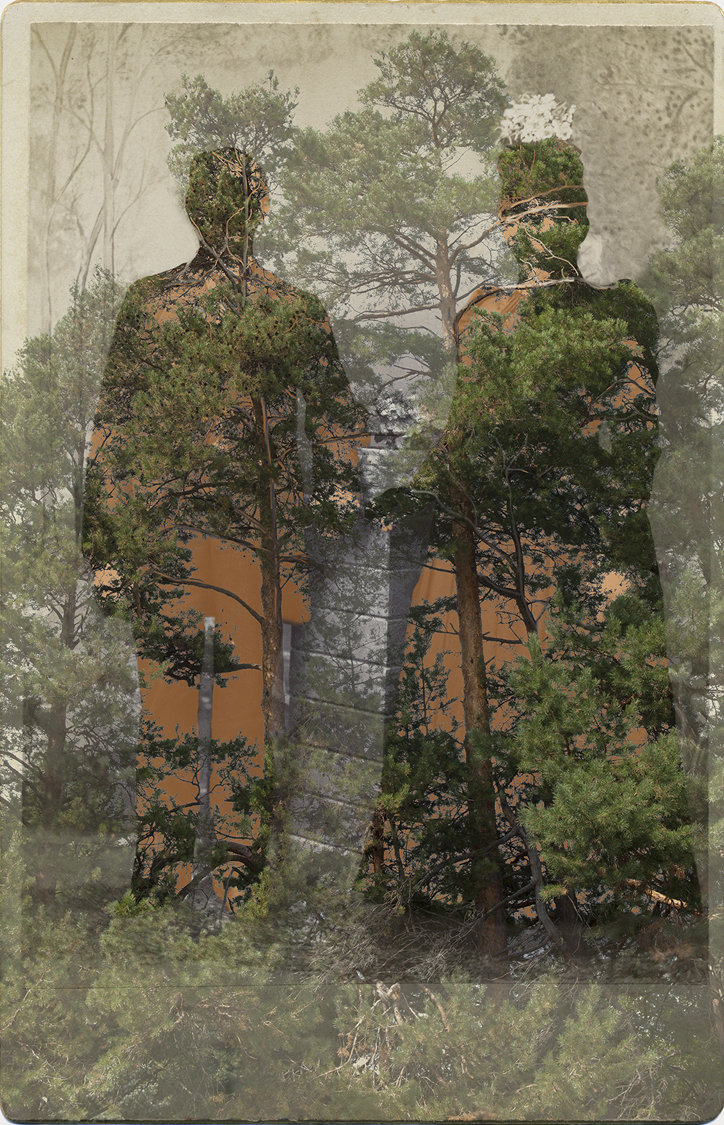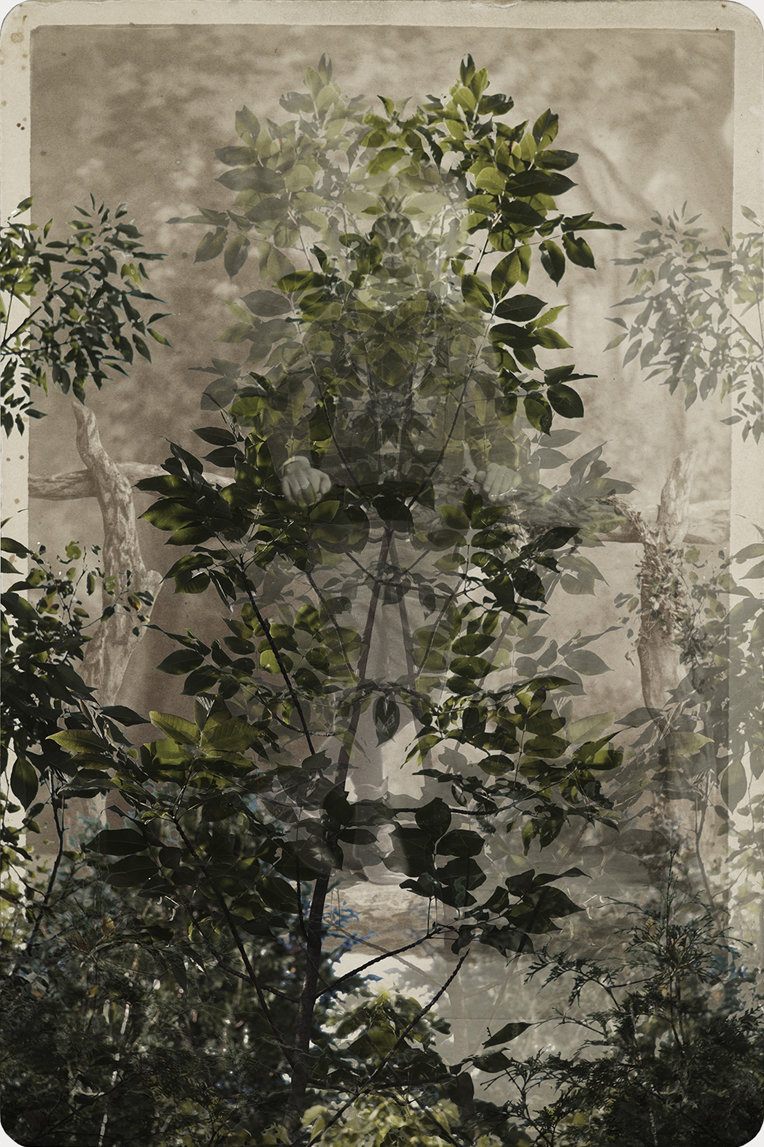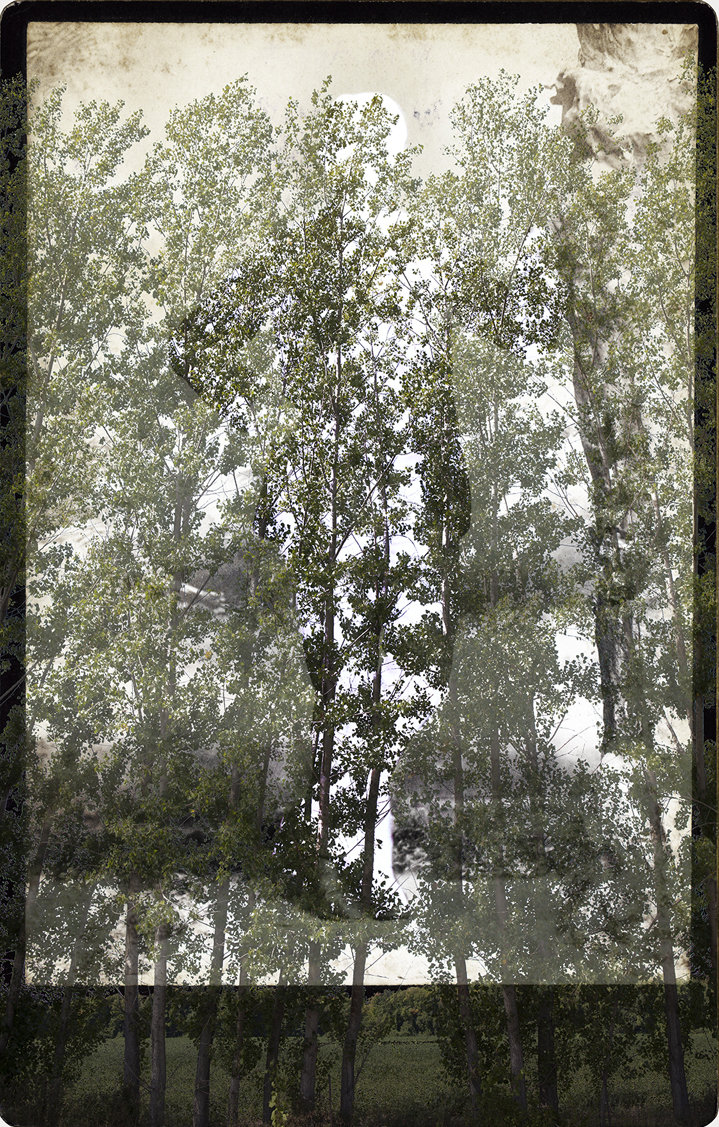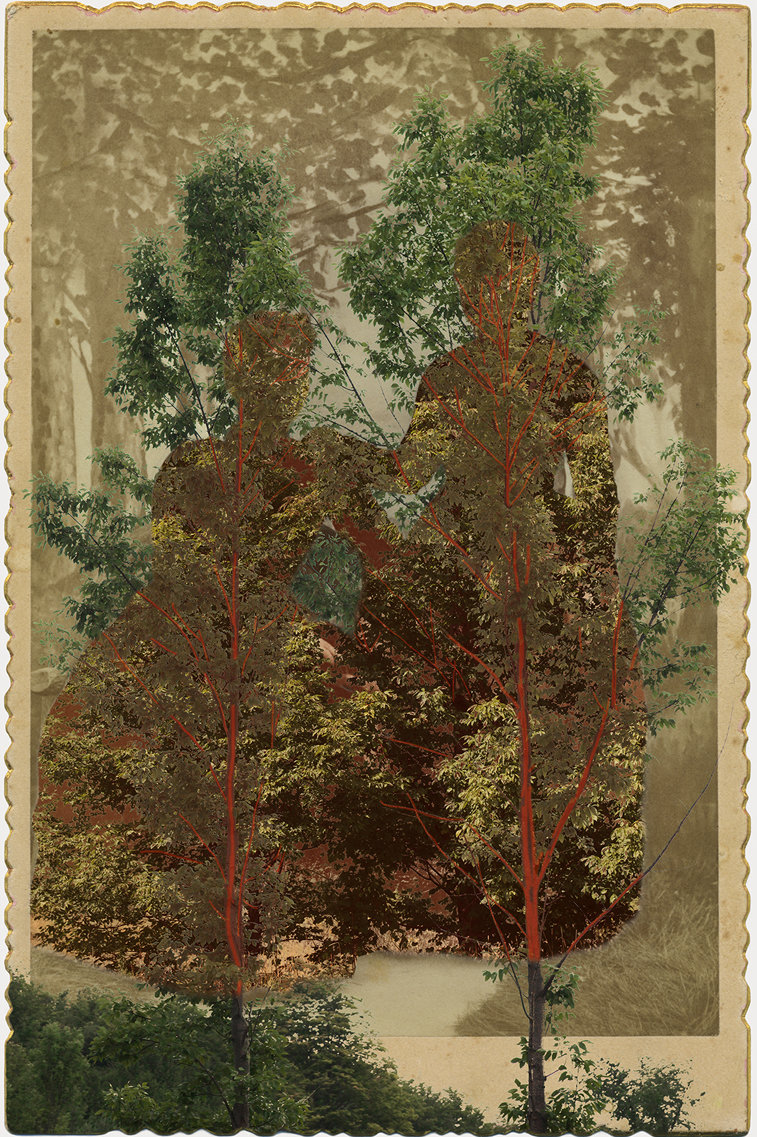Arboretum: Fusing of man and nature
Environmental issues dominate Angelucci’s Inkjet photography series entitled Arboretum. Expanding on Aviary, Angelucci’s previous series concerning extinct birds, Arboretum addresses the current state of deforestation. Befitting the exhibition’s concept, arboretum, Latin in origin, refers to a place grown with rare trees. By thematically linking the title, the photographs and her environmental philosophy, Angelucci’s Arboretum dissolves the polarity of man and nature, and decisively subordinates humans to trees.
 Man/Woman/Pines, 2016 © Sara Angelucci / Courtesy Stephen Bulger Gallery
Man/Woman/Pines, 2016 © Sara Angelucci / Courtesy Stephen Bulger Gallery
Most pieces in Arboretum challenges the traditional notion of man taming nature, instead nature dominates the composition of the photographic pieces as seen in Boy/Double Ash. The man on the ephemera is faintly visible, with his two hands grabbing and leaning on a wooden post and lintel. His face and legs are almost unrecognizable. The nature –trees, leaves, branches –overshadow the human, who, in fact, functions as if a backdrop or a landscape. Interestingly nature’s subordinated role on carte-de-visite or even Leonardo da Vinci’s Mona Lisa is reversed by Angelucci; now nature is the main subject matter.
 Boy/Double Ash, 2016 © Sara Angelucci / Courtesy Stephen Bulger Gallery
Boy/Double Ash, 2016 © Sara Angelucci / Courtesy Stephen Bulger Gallery
In Man/Poplar, there is only an indistinct silhouette of a human superimposed by overgrown trees. The entire piece is filled with greenery, making it difficult to discern the human. This, too, concentrates on bringing nature into the fore, it is no longer a mere decorative backdrop or a random image of trees. In fact, all the nature seen in the exhibition is the author’s own photographs of indigenous trees of Ontario. Angelucci treats nature as the centre of her environmental pieces.
 Man/Poplar, 2016 © Sara Angelucci / Courtesy Stephen Bulger Gallery
Man/Poplar, 2016 © Sara Angelucci / Courtesy Stephen Bulger Gallery
What is all the more interesting is not only Angelucci’s concentration on nature, but also the concept of superimposing old nineteenth–century cabinet cards to current photographs of Ontarian trees. She integrates the old and the new to produce works that address issues of deforestation. Ironically, the dead seen in these photographs as if they are the trees themselves, awaiting to be chopped and killed for human benefit. This is clearly visible in Sister Elms, which shows presumably two sisters, integrated with the trees in the foreground. The integration of trees and humans inexplicitly foretells the issues and harmful effects of deforestation not only on nature but also on humans.
 Sister Elms, 2016 © Sara Angelucci / Courtesy Stephen Bulger Gallery
Sister Elms, 2016 © Sara Angelucci / Courtesy Stephen Bulger Gallery
In Arboretum, Angelucci captures nature with humans and integrates the old and the new. She raises awareness and informs the viewers of deforestation, all the while creating a new way of photographing and printing, and combining them to manufacture a creative series of photographs.
Katerina Bong
*Exhibition information: October 22 – November 19, 2016, Stephen Bulger Gallery, 1026 Queen Street West, Toronto. Gallery hours: Tue – Sat, 11 am – 6 pm.
